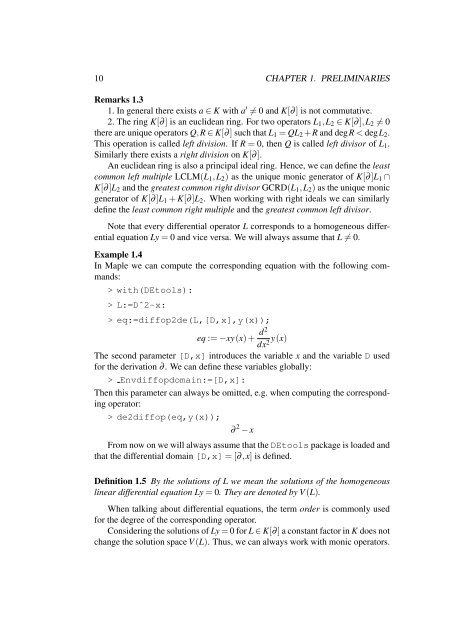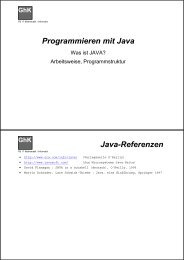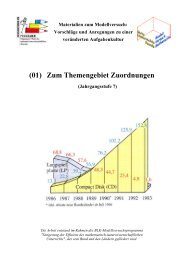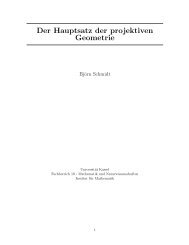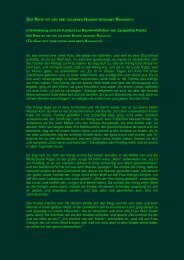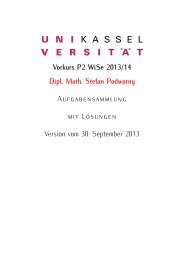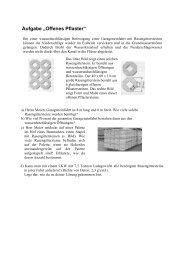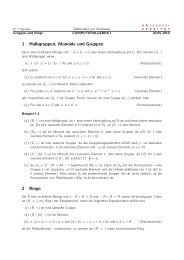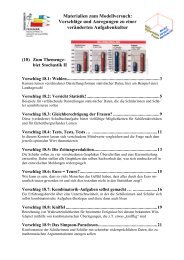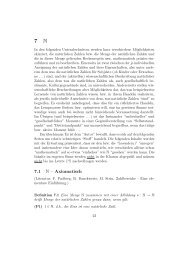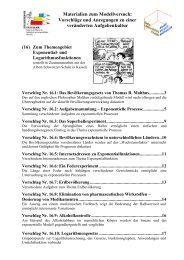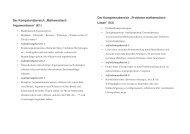Solving Differential Equations in Terms of Bessel Functions
Solving Differential Equations in Terms of Bessel Functions
Solving Differential Equations in Terms of Bessel Functions
You also want an ePaper? Increase the reach of your titles
YUMPU automatically turns print PDFs into web optimized ePapers that Google loves.
10 CHAPTER 1. PRELIMINARIES<br />
Remarks 1.3<br />
1. In general there exists a ∈ K with a ′ = 0 and K[∂] is not commutative.<br />
2. The r<strong>in</strong>g K[∂] is an euclidean r<strong>in</strong>g. For two operators L1,L2 ∈ K[∂],L2 = 0<br />
there are unique operators Q,R ∈ K[∂] such that L1 = QL2 +R and degR < degL2.<br />
This operation is called left division. If R = 0, then Q is called left divisor <strong>of</strong> L1.<br />
Similarly there exists a right division on K[∂].<br />
An euclidean r<strong>in</strong>g is also a pr<strong>in</strong>cipal ideal r<strong>in</strong>g. Hence, we can def<strong>in</strong>e the least<br />
common left multiple LCLM(L1,L2) as the unique monic generator <strong>of</strong> K[∂]L1 ∩<br />
K[∂]L2 and the greatest common right divisor GCRD(L1,L2) as the unique monic<br />
generator <strong>of</strong> K[∂]L1 + K[∂]L2. When work<strong>in</strong>g with right ideals we can similarly<br />
def<strong>in</strong>e the least common right multiple and the greatest common left divisor.<br />
Note that every differential operator L corresponds to a homogeneous differential<br />
equation Ly = 0 and vice versa. We will always assume that L = 0.<br />
Example 1.4<br />
In Maple we can compute the correspond<strong>in</strong>g equation with the follow<strong>in</strong>g commands:<br />
> with(DEtools):<br />
> L:=Dˆ2-x:<br />
> eq:=diffop2de(L,[D,x],y(x));<br />
eq := −xy(x) + d2<br />
y(x)<br />
dx2 The second parameter [D,x] <strong>in</strong>troduces the variable x and the variable D used<br />
for the derivation ∂. We can def<strong>in</strong>e these variables globally:<br />
> Envdiffopdoma<strong>in</strong>:=[D,x]:<br />
Then this parameter can always be omitted, e.g. when comput<strong>in</strong>g the correspond<strong>in</strong>g<br />
operator:<br />
> de2diffop(eq,y(x));<br />
∂ 2 − x<br />
From now on we will always assume that the DEtools package is loaded and<br />
that the differential doma<strong>in</strong> [D,x] = [∂,x] is def<strong>in</strong>ed.<br />
Def<strong>in</strong>ition 1.5 By the solutions <strong>of</strong> L we mean the solutions <strong>of</strong> the homogeneous<br />
l<strong>in</strong>ear differential equation Ly = 0. They are denoted by V (L).<br />
When talk<strong>in</strong>g about differential equations, the term order is commonly used<br />
for the degree <strong>of</strong> the correspond<strong>in</strong>g operator.<br />
Consider<strong>in</strong>g the solutions <strong>of</strong> Ly = 0 for L ∈ K[∂] a constant factor <strong>in</strong> K does not<br />
change the solution space V (L). Thus, we can always work with monic operators.


